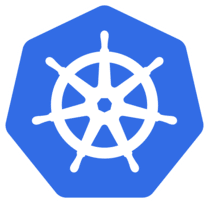このページは、まだ日本語ではご利用いただけません。翻訳中です。
旧バージョンのドキュメントを参照しています。 最新のドキュメントはこちらをご参照ください。
Architecture
In this guide you’ll learn how your Kubernetes resources are synchronized against Kong Konnect.
Overview
Kong Gateway Operator 1.4.0 introduced support for managing Kong Konnect entities. It is designed to allow users drive their Konnect configuration through Kubernetes CRDs.
Note: Kong Konnect entities management is an opt-in feature. You must enable it by setting
GATEWAY_OPERATOR_ENABLE_CONTROLLER_KONNECTenvironment variable totrue.
At a high level Kong Gateway Operator, watches for changes in the Kubernetes cluster and synchronizes them against Kong Konnect.
Below diagram illustrates high level overview, how Konnect configuration is synchronized from Kubernetes resources to Konnect:
flowchart BT
subgraph Kong Konnect
direction LR
KonnectAPI( Konnect APIs)
end
subgraph Kubernetes cluster
direction LR
KGO(
Konnect APIs)
end
subgraph Kubernetes cluster
direction LR
KGO( Kong Gateway Operator)
K8sAPIServer(
Kong Gateway Operator)
K8sAPIServer( API server)
end
KGO -.-> |configuration synchronization| KonnectAPI
K8sAPIServer -.-> |events| KGO
API server)
end
KGO -.-> |configuration synchronization| KonnectAPI
K8sAPIServer -.-> |events| KGO
How it works
Kong Gateway Operator watches for changes in the Kubernetes cluster and synchronizes them against Konnect.
The synchronization is performed in a loop, where the operator reconciles the state of the cluster with the state of Konnect.
The algorithm is as follows:
- When a Kubernetes resource is created:
- The operator checks if it has references and whether they are valid, if not it assigns a failure condition to the resource.
- If the resource has references and they are valid, the operator calls the Konnect API’s create method.
- If the creation was unsuccessful, the operator assigns a failure condition to the resource.
- If the creation was successful, the operator assigns the resource’s ID, OrgID, ServerURL and status conditions.
- The operator enqueues the resource for update after the configured sync period passes.
- When a Kubernetes resource is updated:
- The operator checks if the resource’s spec, annotations or labels have changed.
- If the spec, annotations or labels have changed:
- The operator calls the Konnect API’s update method.
- If the update was unsuccessful, the operator assigns a failure condition to the resource.
- If the update was successful, the operator waits for the configured sync period to pass.
- The operator calls the Konnect API’s update method.
- If the spec, annotations or labels have not changed:
- If sync period has not passed, the operator enqueues the resource for update.
- If sync period has passed, the operator calls the Konnect API’s update method.
- If the update was unsuccessful, the operator assigns a failure condition to the resource.
- If the update was successful, the operator enqueues the resource for update.
- When a Kubernetes resource is deleted:
- The operator calls the Konnect API’s delete method.
- If the deletion was unsuccessful, the operator assigns a failure condition to the resource.
- If the deletion was successful, the operator removes the resource from the cluster.
- The operator calls the Konnect API’s delete method.
Below diagram illustrates the algorithm:
flowchart TB
classDef decision fill:#d0e1fb
classDef start fill:#545454,stroke:none,color:#fff
k8sResourceCreated(Kubernetes resource created)
k8sResourceUpdated(Kubernetes resource updated)
rLoopStart[Operator reconciliation start]
failure[Assign object's status conditions to indicate failure]
resourceSpecChanged{Resource spec, annotations or labels changed?}
waitForSync["Wait until sync period passes (default 1m)
(Prevent API rate limiting)"]
createSuccess[Assign object's ID, OrgID, ServerURL and status conditions]
hasReferences{If object has references, are they all valid?}
isAlreadyCreated{Object already created?}
syncPeriodPassed[Sync period passed]
updateKonnectEntity[Call Konnect API's update]
wasUpdateSuccessful{Was update successful?}
wasCreateSuccessful{Was create successful?}
callCreate[Call Konnect API's create]
k8sResourceCreated --> rLoopStart
rLoopStart --> isAlreadyCreated
isAlreadyCreated -->|Yes| waitForSync
isAlreadyCreated -->|No| hasReferences
hasReferences -->|Yes| callCreate
hasReferences -->|No| failure
callCreate --> wasCreateSuccessful
wasCreateSuccessful -->|Yes| createSuccess
wasCreateSuccessful -->|No| failure
k8sResourceUpdated --> resourceSpecChanged
resourceSpecChanged -->|Yes| updateKonnectEntity
resourceSpecChanged -->|No| waitForSync
createSuccess --> waitForSync
waitForSync --> syncPeriodPassed
syncPeriodPassed --> updateKonnectEntity
updateKonnectEntity --> wasUpdateSuccessful
wasUpdateSuccessful -->|Yes| waitForSync
wasUpdateSuccessful -->|No| failure
failure -->rLoopStart
class hasReferences,wasCreateSuccessful,wasUpdateSuccessful decision
class k8sResourceCreated,k8sResourceUpdated start
Kubernetes resources
Each Kubernetes resource that is mapped to a Konnect entity has several fields that indicate its status in Konnect.
Konnect native objects
Objects that are native to Konnect - they exist only in Konnect - have the following status fields:
-
idis the unique identifier of the Konnect entity as assigned by Kong Konnect API. If it’s unset (empty string), it means the Kong Konnect entity hasn’t been created yet. -
serverURLis the URL of the Kong Konnect server in which the entity exists. -
organizationIDis ID of Kong Konnect Org that this entity has been created in.
You can observe these fields by running:
kubectl get <resource> <resource-name> -o yaml | yq '.status'
You should see the following output:
conditions:
...
id: 7dcf6756-b2e7-4067-a19b-111111111111
organizationID: 5ca26716-02f7-4430-9117-111111111111
serverURL: https://us.api.konghq.com
These objects are defined under konnect.konghq.com API group.
Objects configuring Kong Gateway
Some objects can be used to configure Kong Gateway and are not native to Konnect.
These are for example KongConsumer, KongService, KongRoute and KongPlugin. They are defined under configuration.konghq.com API group.
They can also be used in other contexts like for instance: be used for reconciliation with Kong Ingress Controller.
These objects have their Konnect status related fields nested under konnect field. These fields are:
-
controlPlaneIDis the ID of the Control Plane this entity is associated with. -
idis the unique identifier of the Konnect entity as assigned by Kong Konnect API. If it’s unset (empty string), it means the Kong Konnect entity hasn’t been created yet. -
serverURLis the URL of the Kong Konnect server in which the entity exists. -
organizationIDis ID of Kong Konnect Org that this entity has been created in.
You can observe these fields by running:
kubectl get <resource> <resource-name> -o yaml | yq '.status.konnect'
You should see the following output:
controlPlaneID: 7dcf6756-b2e7-4067-a19b-111111111111
id: 7dcf6756-b2e7-4067-a19b-111111111111
organizationID: 5ca26716-02f7-4430-9117-111111111111
serverURL: https://us.api.konghq.com












